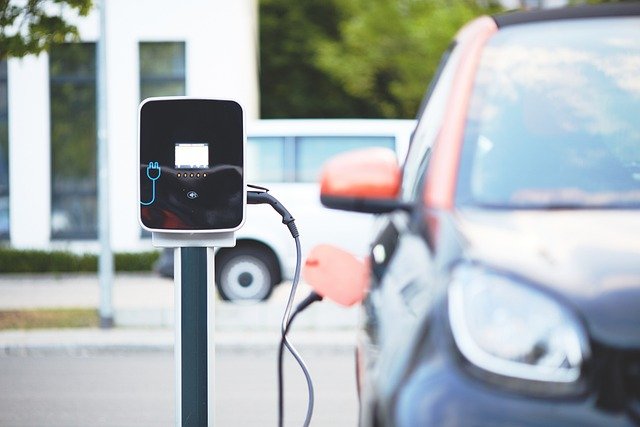Home Electric Car Charger Guide: Speed and Installation
Electric vehicle ownership is surging across the UK, making home charging solutions more important than ever. Installing the right electric car charger for home use eliminates range anxiety and ensures your vehicle is ready for daily commutes. With various charging speeds and installation options available, understanding your choices helps you make an informed decision that suits both your vehicle and lifestyle needs.

What Makes an Electric Car Charger for Home Ideal?
The ideal home electric car charger balances charging speed, installation requirements, and cost-effectiveness. Key factors that determine suitability include power output (measured in kilowatts), amperage rating, and smart features. Most home EV chargers are classified as Level 1 or Level 2 charging units. Level 1 chargers use standard 120V household outlets and typically provide 3-5 miles of range per hour of charging, while Level 2 chargers use 240V outlets similar to those for clothes dryers and can deliver 12-60 miles of range per hour, depending on the model and your vehicle’s capacity.
Beyond charging speed, connectivity features like Wi-Fi integration allow for remote monitoring and scheduling through smartphone apps. These smart chargers can optimize charging during off-peak electricity rates and provide usage statistics. Weather resistance and cable management are practical considerations for outdoor installations, while safety certifications ensure the charger meets electrical standards.
Finding the Fastest Electric Car Charger for Home Use
When searching for maximum charging speed at home, understanding power delivery limitations is crucial. Residential Level 2 chargers typically range from 16 to 80 amps, with most common models operating between 32-40 amps. These provide charging speeds 3-7 times faster than standard outlet charging. The fastest home chargers can deliver up to 19.2 kW of power, though most EVs currently can only accept a maximum of 11.5 kW for home charging.
Your vehicle’s onboard charger ultimately determines the maximum charging rate possible, regardless of how powerful your wall charger is. For example, if your car has a 7.2 kW onboard charger, installing a 11.5 kW wall charger won’t result in faster charging—the vehicle’s capability becomes the limiting factor. Before investing in a high-amperage charger, check your vehicle’s specifications to ensure compatibility and avoid paying for unnecessary capacity.
Understanding Level 2 EV Chargers for Home Charging
Level 2 chargers represent the standard for dedicated home EV charging, operating on 240V power to significantly reduce charging times compared to standard outlets. These chargers require hardwired installation or a specialized outlet similar to those used for electric dryers or ovens. The primary advantage of Level 2 charging is efficiency—what might take 20+ hours with a Level 1 charger can be accomplished in 4-8 hours with Level 2 equipment.
Most Level 2 home chargers come in two main configurations: hardwired units that connect directly to your electrical panel, or plug-in models that use NEMA 14-50 or 6-50 outlets. Hardwired options offer a cleaner installation appearance but less flexibility if you move homes, while plug-in models provide portability but may require outlet installation if your home doesn’t already have compatible connections. Many Level 2 chargers also include load management features that can reduce charging speed during high household electricity demand to prevent circuit overloads.
Installation Requirements and Electrical Considerations
Installing a home EV charger requires careful assessment of your existing electrical infrastructure. Most homes built in recent decades have 200-amp service, which generally supports a Level 2 charger, but older homes with 100-amp service may need an electrical upgrade depending on other major appliances and your charging requirements. A licensed electrician should evaluate your electrical panel’s capacity before installation.
The distance between your electrical panel and the desired charging location significantly impacts installation cost and complexity. Longer runs require more materials and potentially excavation for underground conduit if the charger location is detached from the main building. Local building codes and permits factor into the installation process, with many jurisdictions requiring professional installation by licensed electricians rather than DIY approaches. Some utility companies offer incentives or specialized time-of-use rates for EV owners, which may influence your charger selection and installation planning.
Cost Analysis and Leading Provider Comparison
The total investment for a home EV charger includes both equipment and installation costs. Equipment prices vary widely based on features and brand reputation, while installation expenses depend on your home’s specific electrical configuration and charger location.
| Provider | Charger Model | Power Output | Key Features | Equipment Cost | Typical Installation Cost |
|---|---|---|---|---|---|
| ChargePoint | Home Flex | 16-50 amp (adjustable) | Wi-Fi connectivity, scheduling, energy tracking | £699 | £500-£1,000 |
| Wallbox | Pulsar Plus | 40 amp | Bluetooth/Wi-Fi, power sharing, compact design | £649 | £500-£1,000 |
| EVBox | Elvi | 32-40 amp | Modular design, over-the-air updates, load balancing | £829 | £600-£1,100 |
| Zappi | V2 | 7.2 kW | Solar integration, eco charging modes, energy monitoring | £745 | £500-£1,000 |
| EO | Mini Pro 2 | 7.2 kW | Compact design, solar compatibility, 3-year warranty | £595 | £500-£900 |
Prices, rates, or cost estimates mentioned in this article are based on the latest available information but may change over time. Independent research is advised before making financial decisions.
Installation costs typically range from £500 to £1,500 depending on complexity. Factors affecting installation price include panel upgrades (if necessary), distance from electrical panel to installation location, and any required trenching or wall modifications. Government incentives, like the Electric Vehicle Homecharge Scheme (EVHS) in the UK, can reduce these costs significantly, potentially covering up to 75% of the combined cost of the charger and installation, up to a maximum of £350.
Navigating Electrical Requirements for Maximum Charging Speed
Understanding your home’s electrical capacity is essential for achieving optimal charging speeds. Most residential chargers operate at 7.2 kW (30 amps) or 11.5 kW (48 amps), requiring 40-amp and 60-amp circuit breakers respectively. Your electrician will need to confirm that your electrical panel can handle this additional load without exceeding 80% of the panel’s total capacity, per electrical code requirements.
For households with multiple EVs, load management solutions become increasingly important. Smart chargers with dynamic load balancing can distribute available power between vehicles and other household appliances to prevent circuit overloads. Some systems can even coordinate with home energy management systems or solar installations to optimize charging during periods of excess solar production, maximizing use of renewable energy and potentially reducing charging costs significantly.
Installing a home EV charger represents a significant convenience upgrade for electric vehicle owners, eliminating the need for frequent public charging station visits and ensuring your vehicle is always ready for daily use. By carefully considering charging speed requirements, installation complexity, and available features, you can select a home charging solution that meets both your current needs and future expectations.




